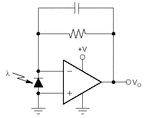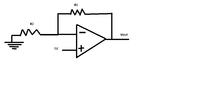kidi3
Full Member level 1
I never quite understood why a negative feedback is so much better than positive feedback.
I know that the usage of it makes it possible to determine the wanted gain, be deciding the resistor values.
But what if i want to amplify a small signal, like an output from an photodiode?..
as i see it the output of the opamp will become negative, which mean that would need some form of inverter to inverter the original output, or have i misunderstood something very basic here?
I know that the usage of it makes it possible to determine the wanted gain, be deciding the resistor values.
But what if i want to amplify a small signal, like an output from an photodiode?..
as i see it the output of the opamp will become negative, which mean that would need some form of inverter to inverter the original output, or have i misunderstood something very basic here?

